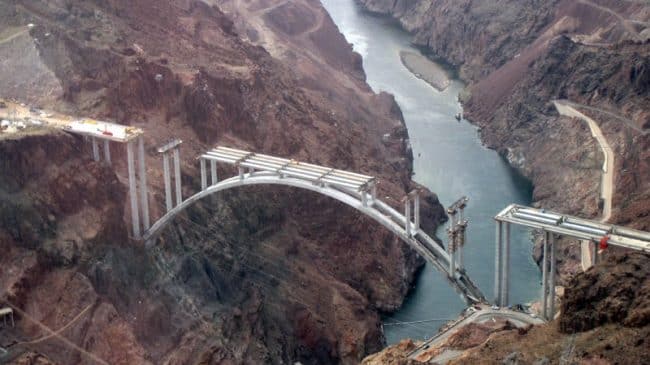The paradox of US infrastructure in 2016 is that everybody agrees we need to invest more—but nobody is enacting policies to bring this about. Consider the following:
- Majorities in both houses of Congress continue to reject increases in fuel-tax rates.
- With the federal government on a path toward insolvency, Congress will soon run out of general-fund “pay-fors” to bulk up the Highway Trust Fund.
- As The Wall Street Journal reported, despite interest rates being at historic lows, cities and states are opting for less debt rather than doing more bond-financing.
So how are we going to invest trillions of dollars in better infrastructure in the coming decade? In previous columns I have discussed two key ideas: asset recycling and pension fund investment.
Asset recycling refers to a government selling or long-term leasing existing revenue-producing infrastructure facilities and using the proceeds to invest in new infrastructure that cannot be self-supporting (e.g., mass transit, some kinds of bridges and tunnels, school buildings, etc.). The recycled assets would be leased under revenue-risk public-private partnership (P3) concessions, while the new infrastructure would be procured via availability-payment (AP) concessions.
Public pension funds are logical investors in brownfield revenue-risk concessions for several reasons. They need an additional asset class to shore up their investment returns, but will be happy with 8-9 percent rather than the double-digit returns expected by infrastructure investment funds that invest in riskier greenfield concessions. And this means, other things equal, user-fee rates for refurbished infrastructure won’t need to be as high. Moreover, public pension funds provide the retirement income for huge numbers of public employees. This combination of features suggests the possibility of bipartisan support for pension-fund investment in recycled revenue-producing airports, toll roads, seaports, and municipal water and electric utilities.
Like any new idea, however, asset recycling must overcome what Milton Friedman called “the tyranny of the status quo.”
Recall a decade ago how much political opposition there was to the long-term leases of the Chicago Skyway and the Indiana Toll Road. And at least one public employee union in California last year bitterly denounced the decision of CalPERS (the nation’s largest public pension fund) to invest in the Indiana Toll Road. Most public employee unions will term such proposals “Privatization,” and be automatically against them at first blush.
One way to start gaining traction for the idea is to document its success in other countries. Australia has been the leading practitioner, as I discussed in March, and despite a very recent pull-back by its new federal government, states such as New South Wales continue to recycle assets and invest the proceeds. Canada’s new Liberal government is developing plans for asset recycling, with advice from some of the leaders of its major public pension funds, which have been investing in infrastructure for more than a decade (mostly overseas due to a lack of opportunities in Canada). Ontario is the early leader in asset recycling, having sold 30 percent of state-owned utility HydroOne to investors last year, and planning many further sales. Quebec is developing an aggressive program, headed by major pension fund Caisse de depot et placement.
Although a few U.S. pension fund have begun such investments, most don’t really understand the merits of P3 concessions as a superior form of stewardship of vital public-purpose infrastructure. And the same is true of most elected officials. So a concerted educational effort is needed to explain to these audiences what readers of this newsletter already know:
- There are major benefits in shifting risks such as revenue uncertainty, (re)construction cost overruns, schedule slips, etc. from taxpayers to investors.
- Long-standing deferred maintenance can be addressed and proper ongoing maintenance guaranteed over the long life of the concession agreement.
- New technology (and flexible pricing) are more likely to be implemented by commercially-minded P3 companies.
Besides getting pension funds, elected officials, and the media familiar with both asset recycling and the synergies of public pension fund investment in infrastructure, what else is needed to get this concept under way in the United States?
As we have learned with other innovations, such as express toll lanes and P3 concessions themselves, new policy ideas need political champions, and we need to start looking for such people. The original lease of the Indiana Toll Road would not have happened without the vision and political courage of then-Indiana Gov. Mitch Daniels. He happened to be a Republican, but his counterpart in leasing the Chicago Skyway was then-Mayor Richard Daley, a Democrat. Surely there are members of both parties—in Congress, in governors’ offices, and elsewhere—who care deeply about infrastructure investments and who might come to see asset recycling and pension fund investments as a new way forward. (DOT Secretary Anthony Foxx visited with Australian pension funds on a visit there in August—but he will likely soon be out of office.)
Someone with the right credentials should start talking with union leadership about these ideas. Infrastructure attorney John Schmidt of Mayer Brown tells me that construction unions in Chicago supported both of the efforts to lease Midway Airport, and their counterparts in Indiana did likewise for the lease of the Indiana Toll Road. Significant union support would make this approach more acceptable to Democrats.
Finally, in our efforts next year to get Congress to lift the $15 billion cap on tax-exempt private activity bonds, the P3 community should embrace Schmidt’s proposal that tax-exempt bonds be allowed in deals to acquire brownfield transportation assets for reconstruction and modernization. Currently they may only be used for greenfield P3 projects.
The paradox–of agreement on the need for large-scale infrastructure investment but no agreement on how to pay for it–cries out for a solution. Asset recycling and pension fund investment could play a key role in resolving this conundrum.

